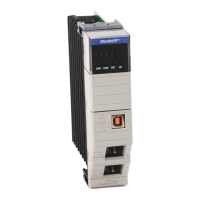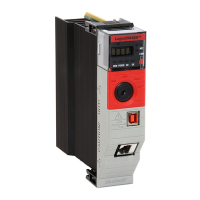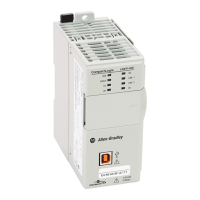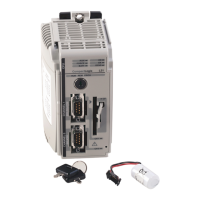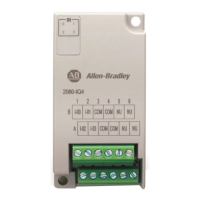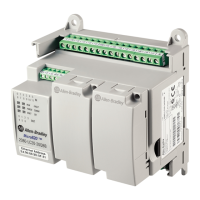Rockwell Automation Publication 1756-PM020F-EN-P - January 2019 29
byte offset field value with each request by the number of bytes it transferred
in the previous request.
The Byte Offset field is expressed in number of bytes regardless of the data
type being read. In the examples that follow, the data type being read is
SINT, which happens to be a byte. In this case, the elements and offset are in
the same units, which is not the case for other data types.
See also
Example Using Symbolic Segment Addressing on page 29
Example Using Symbol Instance Addressing on page 31
Writing 1750 SINTs to the tag TotalCount using Symbolic Segment
Addressing would consist of the following four service requests with service
data as shown in the tables that follow. The value used for Instance ID was
determined using methods described in CIP Services and User-created Tags.
1st Message Request Field Bytes (in hex) Description - Symbolic Segment Addressing
Request Service 53 Read Tag Fragmented Service (Request)
Request Path Size 06 Request Path is 6 words (12 bytes) long
Request Path 91 0A 54 6F 74 61 6C 43 6F 75 6E 74 ANSI Ext. Symbolic Segment for TotalCount
Request Data C2 00 SINT Tag Type Value
D6 06 Total number of elements to write (1750)
00 00 00 00 Start at this offset.
nn, nn, …nn Element Data for Elements 0 through 473
1st Message Reply Field Bytes (in hex) Description - Symbolic Segment Addressing
Reply Service D3 Write Tag Fragmented Service (Reply)
Reserved 00
General Status 00 Success
Extended Status Size 00 No extended status
2nd Message Request Field Bytes (in hex) Description - Symbolic Segment Addressing
Request Service 53 Write Tag Fragmented Service (Request)
Request Path Size 06 Request Path is 6 words (12 bytes) long
Request Path 91 0A 54 6F 74 61 6C 43 6F 75 6E 74 ANSI Ext. Symbolic Segment for TotalCount
Request Data C2 00 SINT Tag Type Value
D6 06 Total number of elements to write (1750)
DA 01 00 00 Start at this offset.
Example Using Symbolic Segment
Addressing
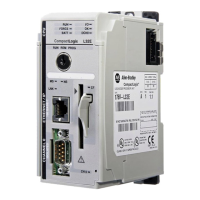
